By the time we got to Factors Walk in downtown Savannah on March 7, it was already dark. Daytime pictures of the area, which used to be home to the sizable business of selling and shipping cotton, are available here.
The ground floor of the Factors Walk buildings facing the Savannah River are mostly oriented to tourists these days, including restaurants and small shops. I bought some postcards at a souvenir store, and when I told the clerk where I lived (he asked), he further asked whether Illinois has mandatory auto emissions tests. I said it does.
He said, as a life-long resident of Savannah, he only recently found out that some states do that. He looked to be in his 30s. It seemed to be a subject of some fascination for him.
Later I checked, and I was only partly correct. Only some counties in Illinois test auto emissions — Cook and Du Page among them, the only counties I’ve ever lived in here. Some Georgia counties do too, but not Chatham, where Savannah is located.
Some of the tourist attractions at Factors Walk are more mobile than the stores, such as the good tourist ship Georgia Queen, apparently docked for the evening.
Another thing I heard from a resident: St. Patrick’s Day is a big to-do in Savannah, probably even bigger this year after two years of cancelation. We came to town nearly two weeks ahead of all that, and so were able to find a room. Closer to the event and we’d have been out of luck, even booking as I did in January.
Some houses were already ready for the festivities, such as along Jones St.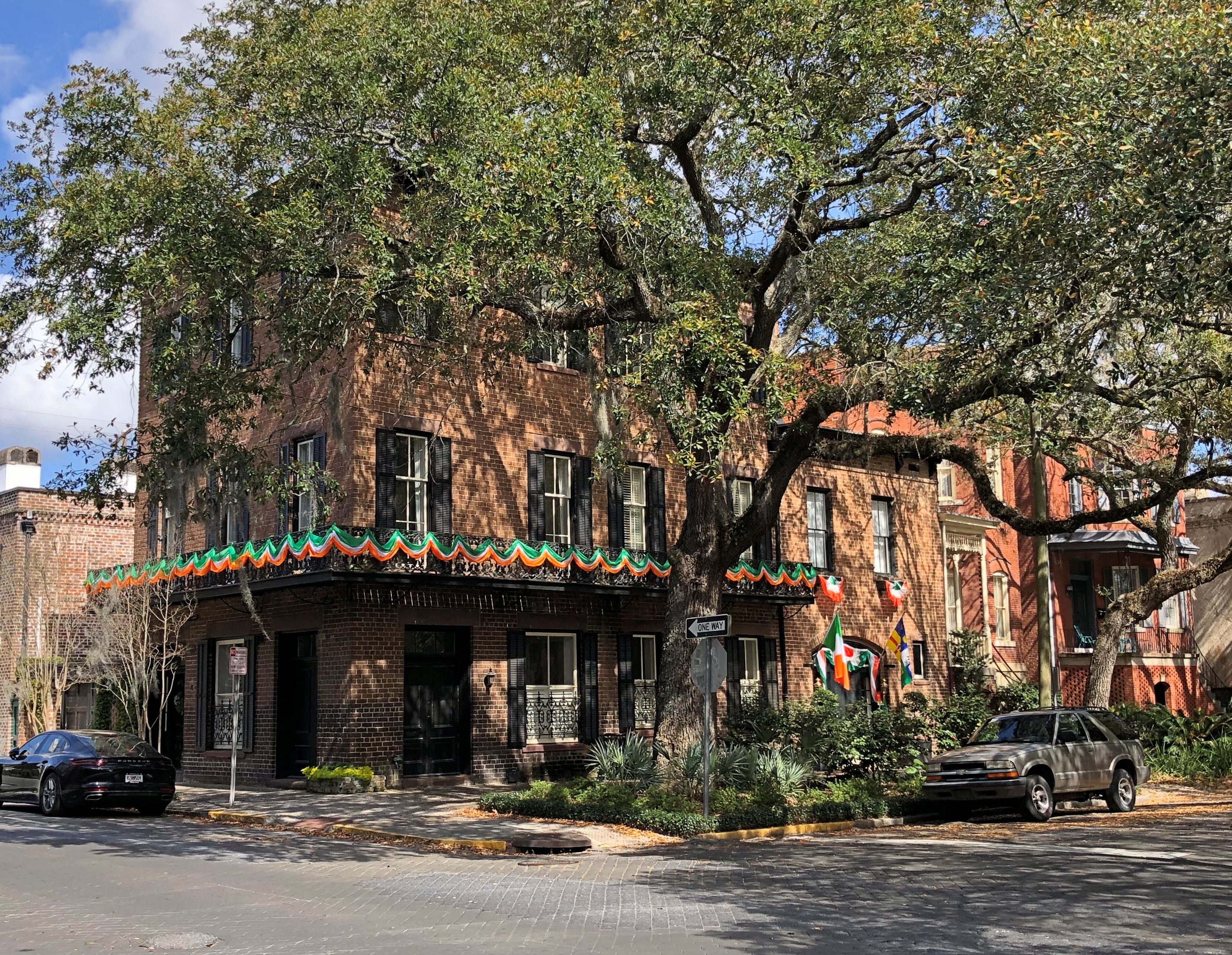
Other places had more topical colors flying.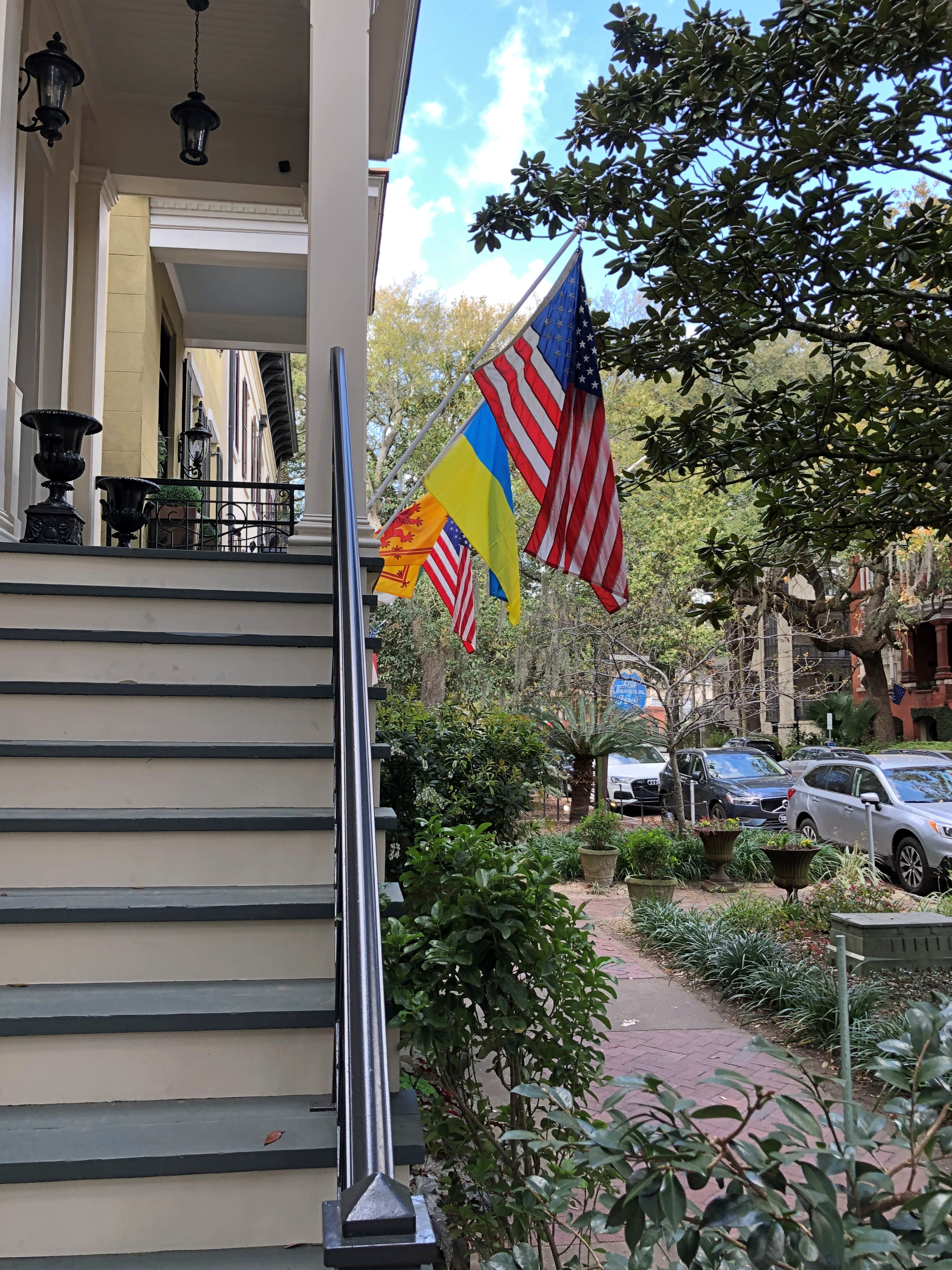
Savannah is easily as picturesque as Charleston, maybe more so, but it needs more stylish cast-iron covers.
The first evening we were in town, I took a walk near the Isseta Inn. I chanced by the Gingerbread House. I knew it was called that because of the sign out front.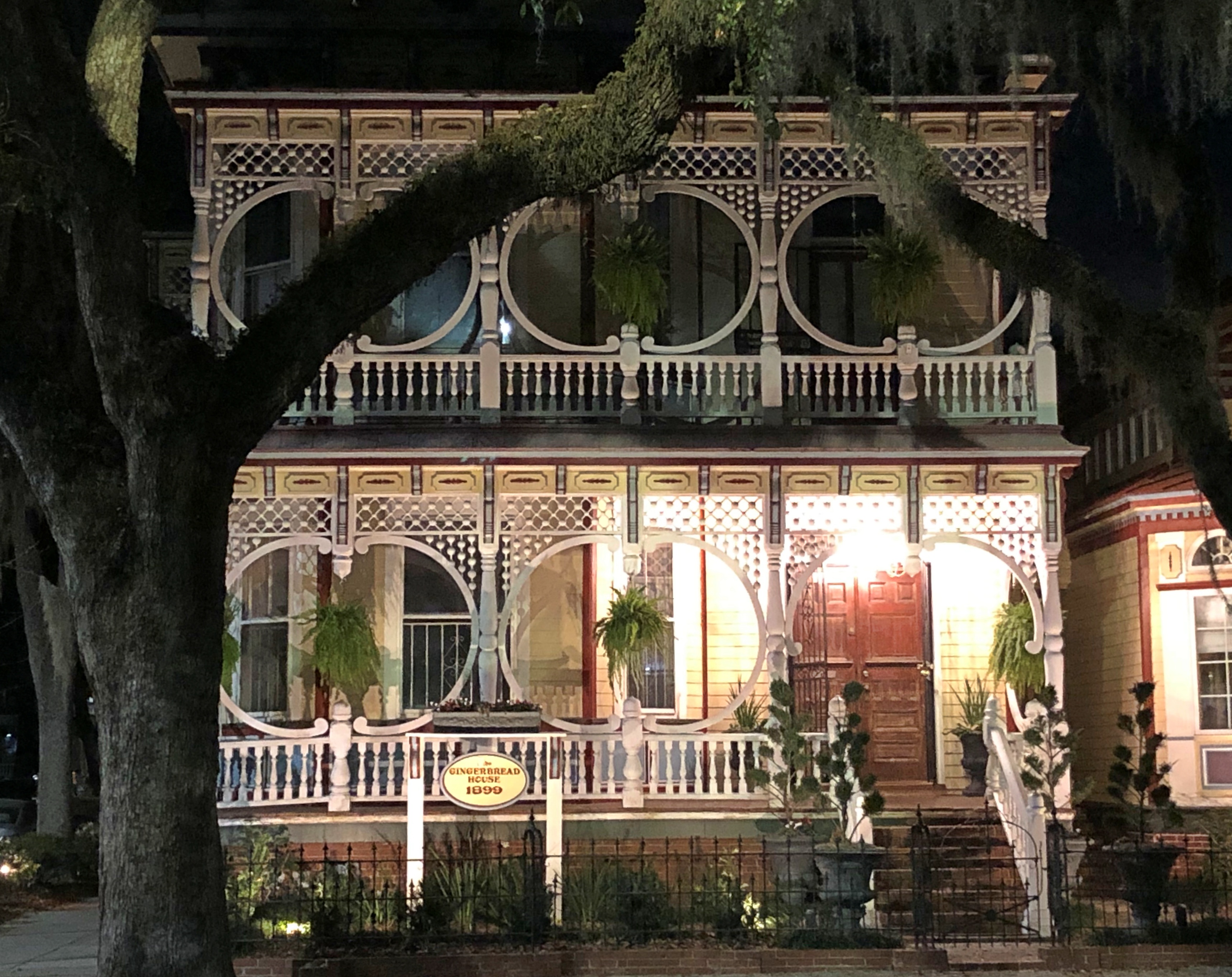
“Built in 1899 by Cord Asendorf, this magnificent house is considered among the finest examples of Steamboat Gothic architecture in America,” the house web site asserts. These days it hosts weddings and other events.
Even closer to the Isetta Inn — on the next block — evidence that the neighborhood continues to gentrify.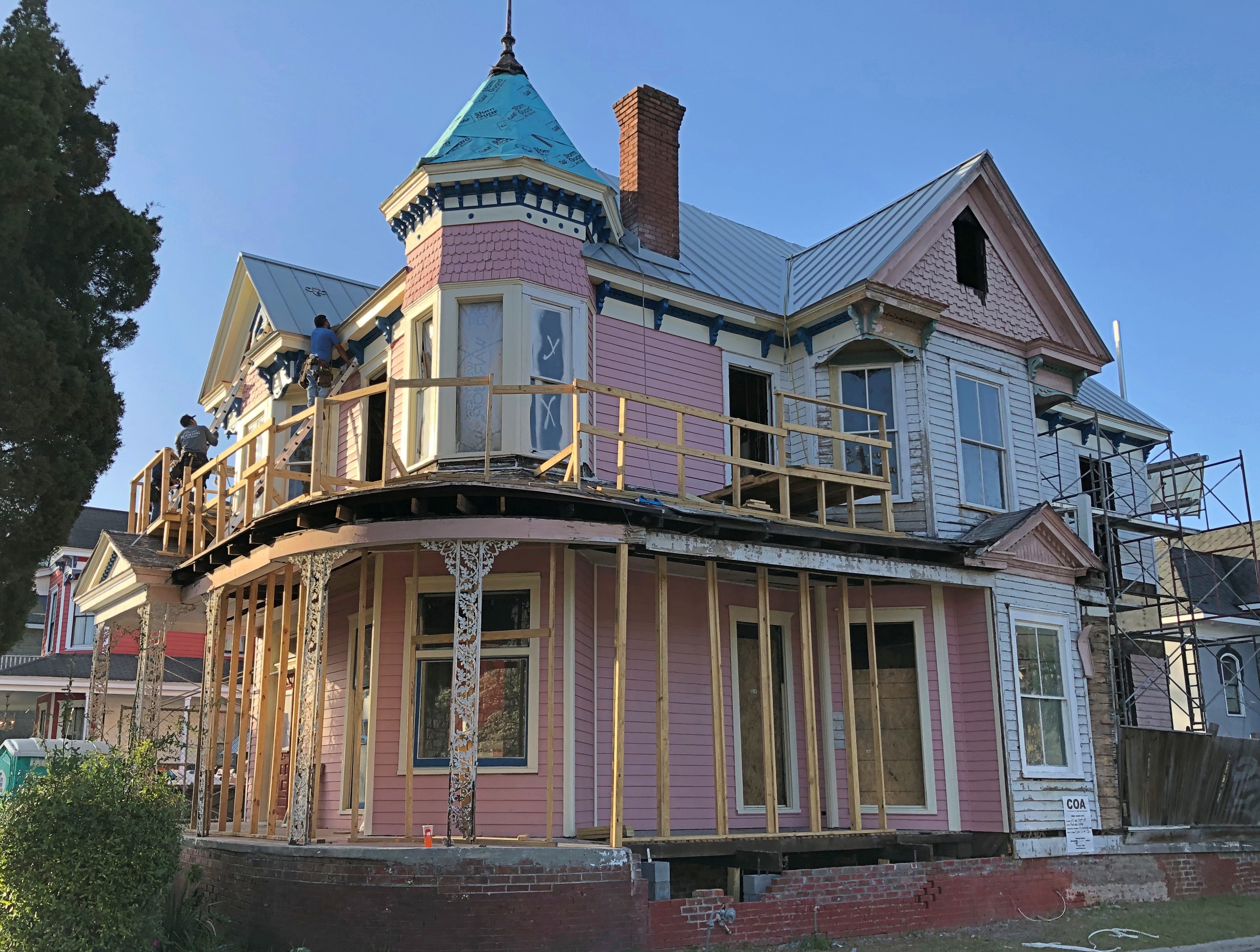
 Though a little clogged with traffic, Victory Drive is a good drive, among the palms that line it. There is some commercial development, including this sign — which has its own Atlas Obscura page. We weren’t inspired to buy anything there.
Though a little clogged with traffic, Victory Drive is a good drive, among the palms that line it. There is some commercial development, including this sign — which has its own Atlas Obscura page. We weren’t inspired to buy anything there.
The town of Tybee Island has very little free parking. I understand the reasons: lots of visitors, infrastructure needs to be maintained, etc. Still, that grated, especially since it applied even on a Sunday, which is when we drove through.
So besides The Crab Shack, which had a gravel parking lot shaded by tall trees, the only place we stopped was along U.S. 80 on the outskirts of town, where no meters or fee signage existed.
We took a look at a small cluster of shops on the road.
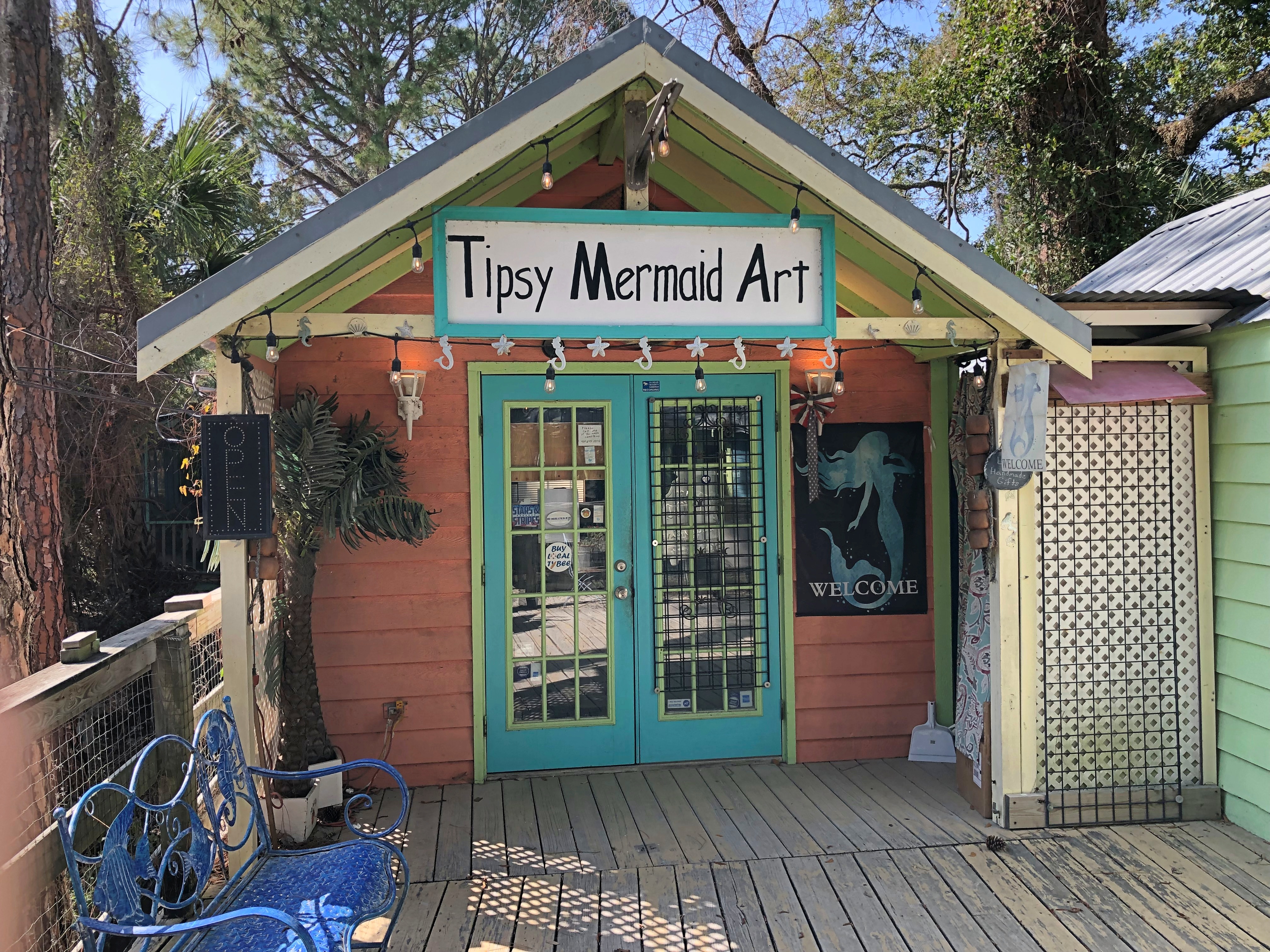

More interestingly, visited Fish Art Gallerie. It has its own Roadside America item, though not including a lot of information. “The folk art environment/gallery/store of Ralph Douglas Jones, who turns junk into fish art. Much colorful nonsense is visible from the street,” RA says.
This is a video of the founder Jones. The guy at the counter when we visited didn’t look like him, which is too bad, since meeting Ralph might be the same kind of trip as meeting Randy in Pittsburgh.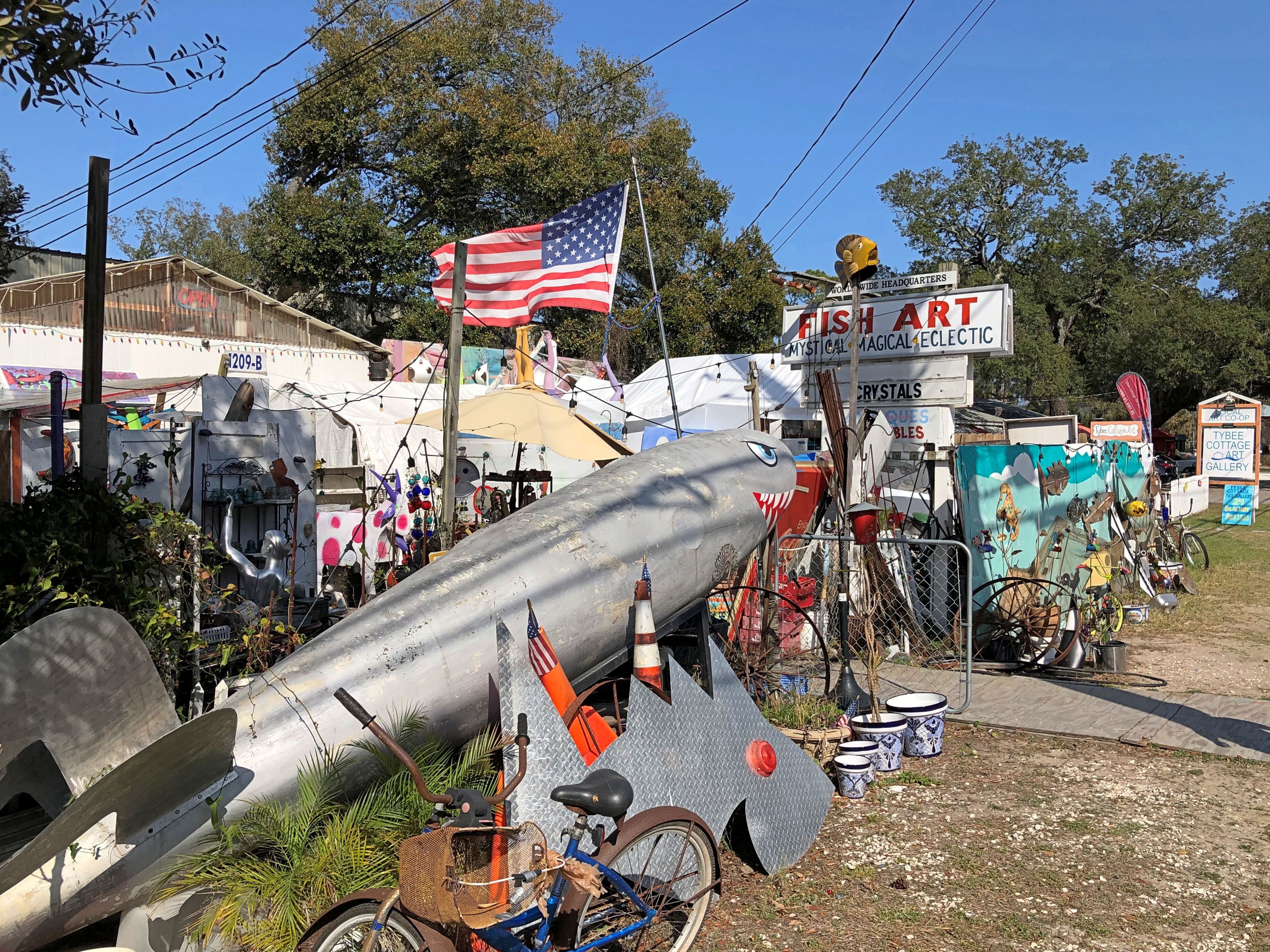

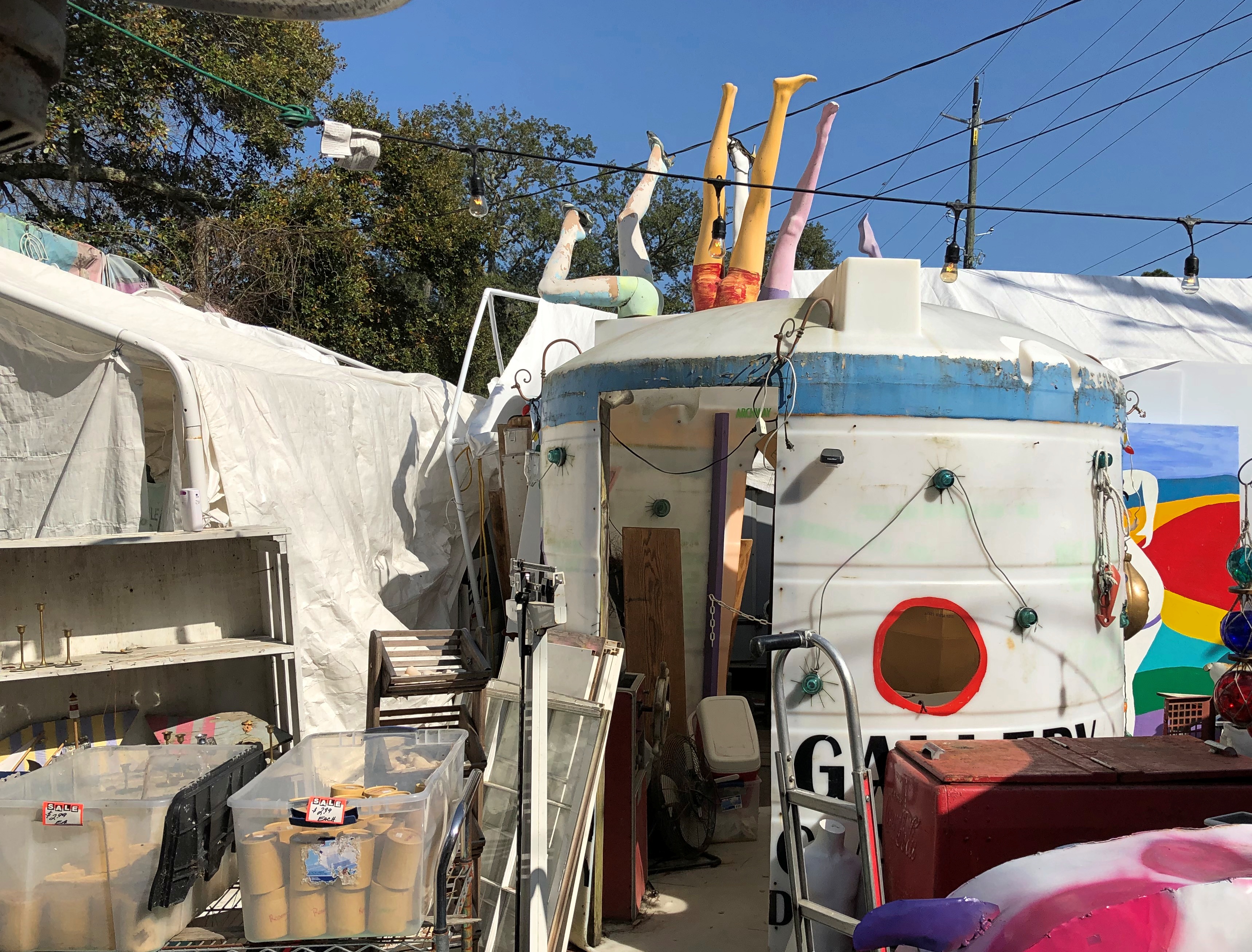
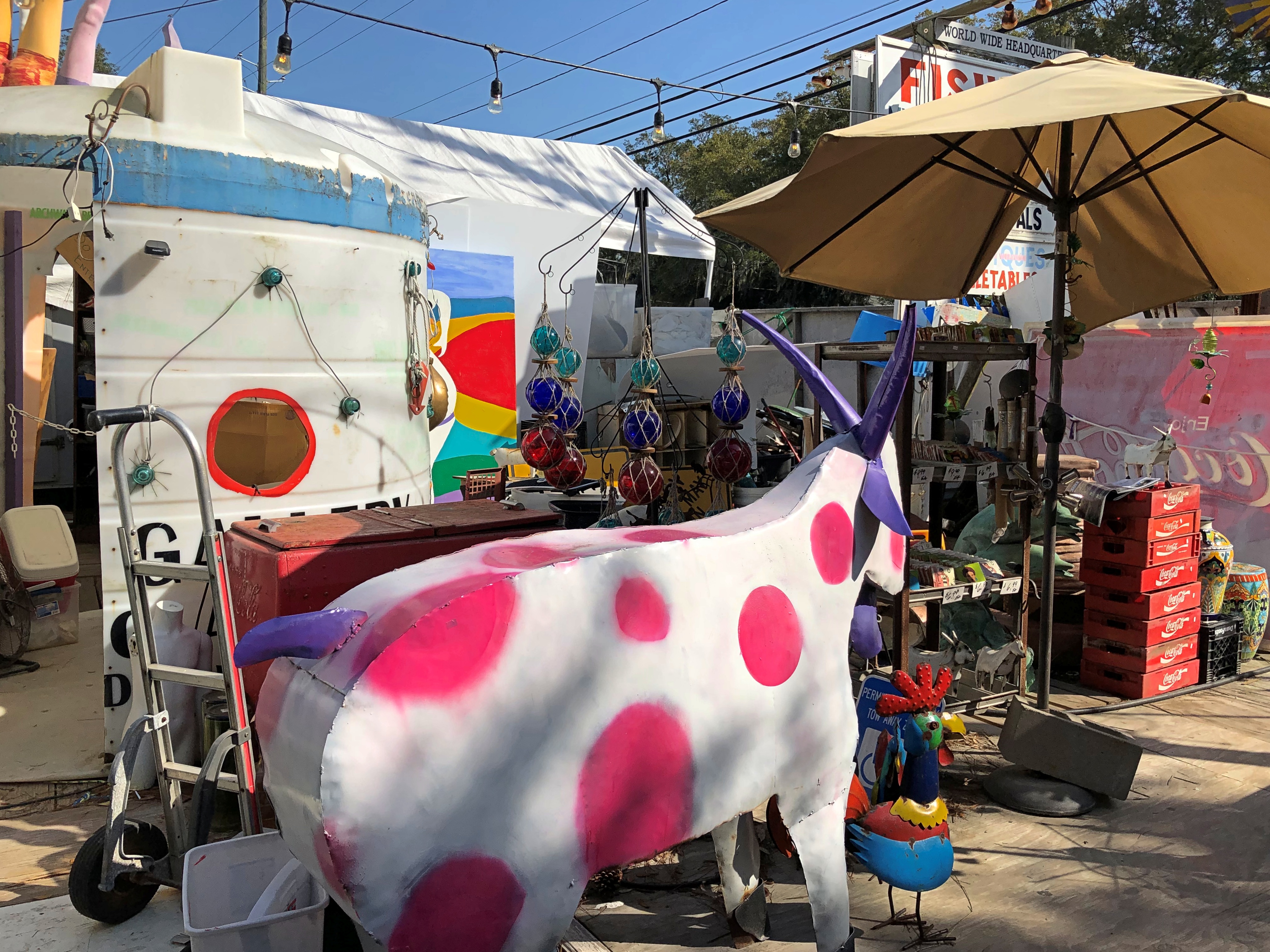
Ann bought some beads and other small items, I bought a cast-iron bottle opener in the shape of a turtle.
One more pic from Tybee Island.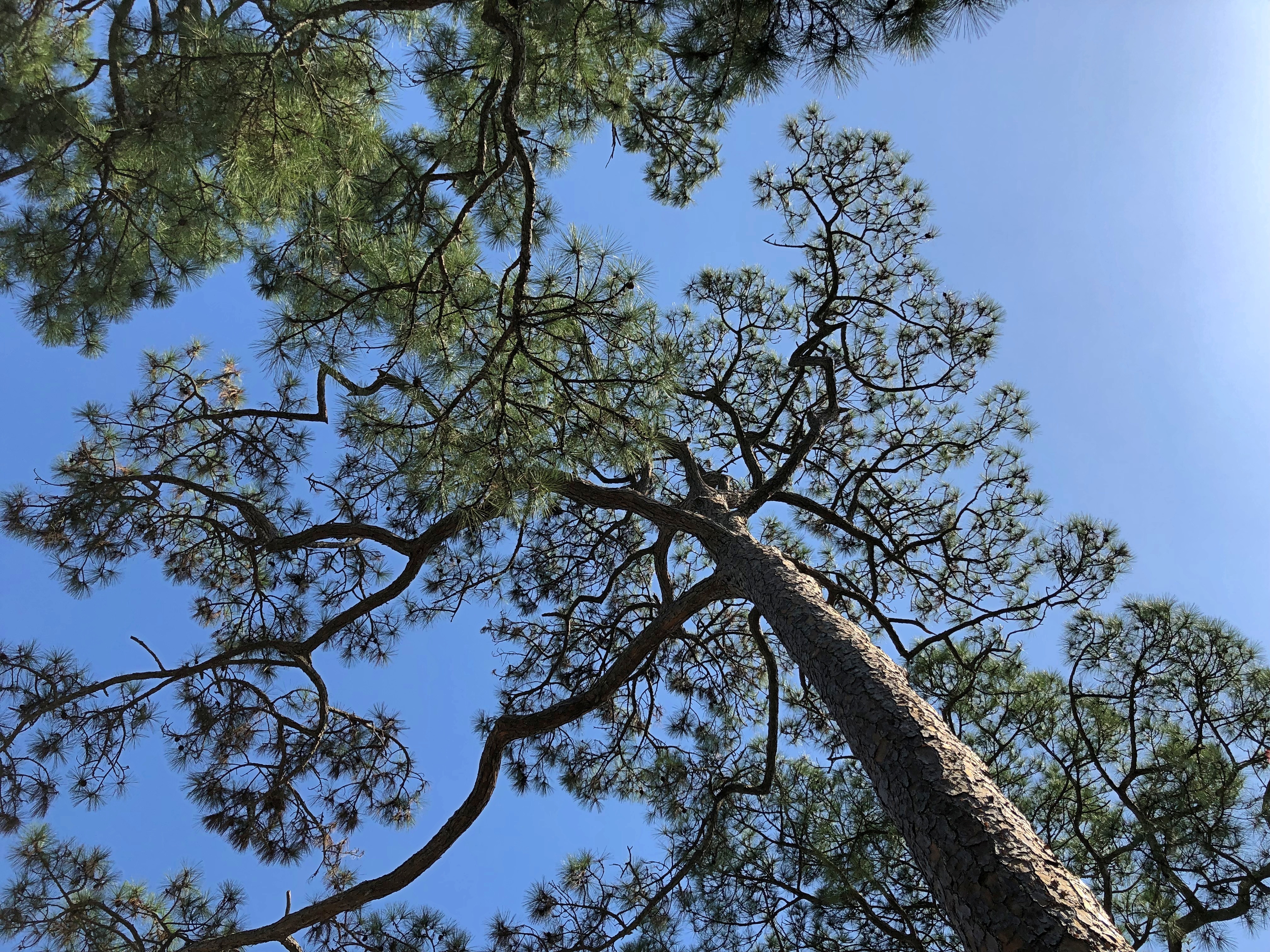
Just more of the trees that helped make visiting this part of the country a delight.